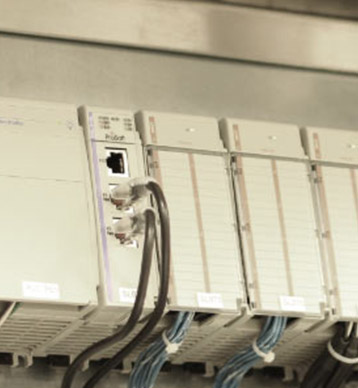Current Position:Home > PRODUCTS
Product Details

Reduced VariabilityIncreased EfficiencyImproved Safety
Basic Process Control System (BPCS) is a system which handles process control and monitoring for a facility or piece of equipment. It takes inputs from sensors and process instrumentations to provide an output based on an approved design control strategy. The Basic Process Control System (BPCS) is responsible for the proper operation of the plant, and in many instances is used in the first laye
Basic Process Control System (BPCS) is a system which handles process control and monitoring for a facility or piece of equipment. It takes inputs from sensors and process instrumentations to provide an output based on an approved design control strategy. The Basic Process Control System (BPCS) is responsible for the proper operation of the plant, and in many instances is used in the first layer of protection against unsafe conditions. A simple example of a basic process control loop is shown in the system shown below. A level transmitter (LT), a level controller (LC), and a control valve (LV) are used to control the liquid level in a process tank.
Basic Process Control Systems are designed to meet a wide range of industrial challenges related to system operation and monitoring. BPCS solutions offered by Aphirsrl Automation include:
Process Control- The development of architectures, mechanisms, and algorithms to maintain a specific process within the desired range. Enables complex processes to be operated from a central location by the use of automation.
Operator Interface & Monitoring- Provides a central system interface for monitoring of process data and equipment operation via an operator console or HMI.
Real-Time & Historical Data- Provide operational information based real-time process data that is displayed locally for the operator
These systems can be designed for particular performance and economic improvement opportunities such as:
Reduced Variability- Improving system operation to produce a more consistent and quality product.
Increased Efficiency- Improving system efficiency can lower operational cost and increase production.
Improved Safety- Provide the first layer of protection against an unsafe condition to equipment and personnel by keeping a process or piece of equipment within a pre-set operating condition.
Improved Troubleshooting and System Diagnostics- Real-time alarm and event logging to shorten downtime due to troubleshooting and diagnostic activities.
Typical Applications:
Temperature Control Loops
Flow Control Loops
Level Control Loops
Pressure Control Loops
Multi-Variable & Advanced Control Loops
Feedforward Control
Feedback Controls
Cascade Control
Batch Control
Ratio Control
Selective Control
Industries
Chemical
Oil & Gas
Food & Beverage
Pharmaceutical
Water & Waste Water
Power
Products & Services
Electrical Engineering & Design
CAD Drawings & Supporting Documentation
Programming & Configuration
Fabrication & Functional Testing
Field Implementation & Commissioning
Replacement of Legacy Controls and Equipment
System Integration